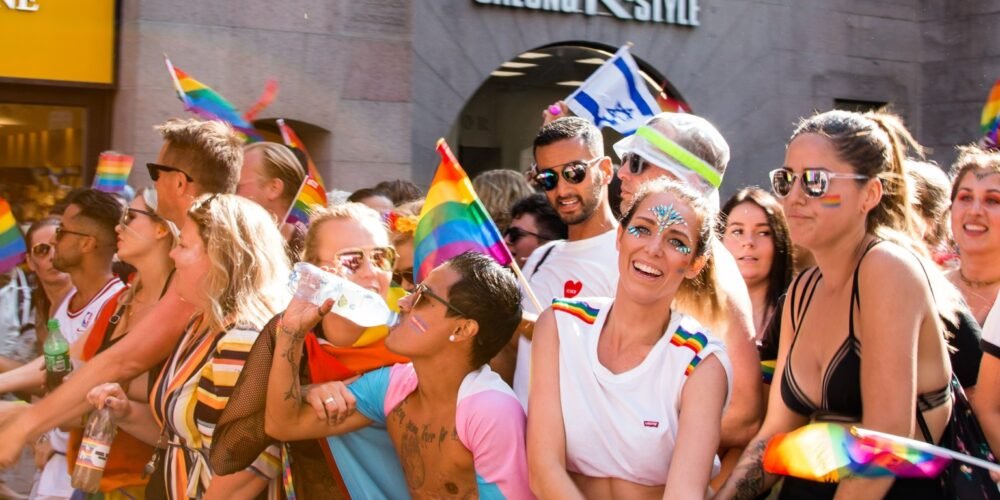A history of LGBT+ Pride in Ireland

Pride is a funny thing. The word can have a lot of different meanings to a lot of different people, but in the sunny month of June the word takes on a more specific meaning. That of pride in oneself for being who they are, without shame or remorse. The pride of being open with yourself and sharing that beauty with the world. But for the community, it has a very specific meaning.
June is the month of LGBT+ Pride.
A time marked by festivals, gatherings, events and parades. A celebration of the unique variety inherent to human sexuality and gender, and a chance to show that to the world. A release for the oppressed, a teachable moment for the ignorant and an olive branch to the struggling.
Humble beginnings
The first Pride was just a riot. That’s how the old joke goes but it’s true. The first Pride was kicked off by the Stonewall Riots of June 1969. The 60s were a turbulent time of great change in America. Vietnam, second-wave feminism, the moon landing. It was a turning point culturally and gay rights were in the mix. The Stonewall Inn was a gay club located in Greenwich Village, New York City. At the time there were still strict laws against homosexual activity and as a result, the New York police raided the club, brutality victimising its partons. The result was a six-day riot from the gay community with violent clashes against the police force.
This is often cited as the key turning point for gay activism in America and would start a domino effect of similar movements across the world.
When did Pride start in Ireland?
Fast forward a whole five years and we have the first Dublin Pride march, on June 27th 1974. Ten proud and daring lads and lassies marched through the streets of Dubin, protesting the criminalisation of homosexuality. This was a dangerous time in Ireland, with the government still cracking down hard on the queer community in Ireland, censoring any publication which used the wrong language or looked on those cast out with a more favourable, gentle eye. A generation of young people left out in the lurch, not given the tools or words needed to come to grips with who they are.
During these dangerous times, small havens of safety were founded, like the Hirschfield Centre of Temple Bar. A safe haven for Dublin’s small gay community, it would eventually receive some much needed media attention in the form of then-Senator/future-President Mary Robinson unveiling a Pink Triangle sign outside the premises in 1981. The Pink Triangle of course is a famously reclaimed symbol for the queer community.
These were among the first small steps for the queer community in Ireland.
The next steps and legal recognition
After those tentative beginnings, the next Gay Pride events would not take place until 1979, although this was not officially recognised. It was a slow, aching process of cultural acceptance. The first flickers of cultural acceptance would over time begin to snowball into legal and political action. The Campaign for Homosexual Law Reform, led by David Noris (Irish scholar and Seanad Éireann representative). The campaign sought to overturn the criminalisation of homosexuality in Ireland and was eventually successful in 1988 when the courts ruled in its favour, although the laws weren’t officially reformed until 1993.
The 1980s was considered a dark time for the Irish queer community, with the progress of legal representation often being pushed back on with violence or prejudice.
Nevertheless, Pride parades continued to take place in June up until 1985, taking a long hiatus before returning with the officially recognised Pride Parade in June of 1992. From there on out they would become a staple of Irish cultural celebrations with the Pride Parade returning each year until today.
Irish Pride in the 21st Century
While the original Pride march of 1979 had a mere ten brave souls in attendance, the march of 2000 had over 6,000. The country was radically transforming as Ireland entered the millennium, and while there was still a long way to go, people were becoming more and more accepting. Beginning not just to tolerate diversity but to celebrate it.
In 2005 that number had reached up to 10,000, and by 2008 the Pride celebrations began to pivot back towards their political routes. Focus was once again put on the lack of legal recognition for same-sex couples under Irish law. This focus resulted in Civil Partnership for same-sex couples being legally recognised in 2011, and the following year’s Pride Parade saw a crowd of 15,000 come out to celebrate.
Finally, in 2015 Ireland became the first country in the world to legalise gay marriage through a referendum. The following year’s Pride Parade was, understandably, spectacular.
COVID and the grand return
Sadly, the long uninterrupted Pride streak since 1992 was slightly interrupted by the Covid pandemic. 2020 and 2021’s celebrations had to be purely online affairs. Fortunately, absence makes the heart grow fonder and Pride 2022 is aiming to come back with a passion. The parade will be back in person and there are events planned throughout the months to celebrate all spectrums of LGBT+ life and culture.
More information about this year’s events can be found here